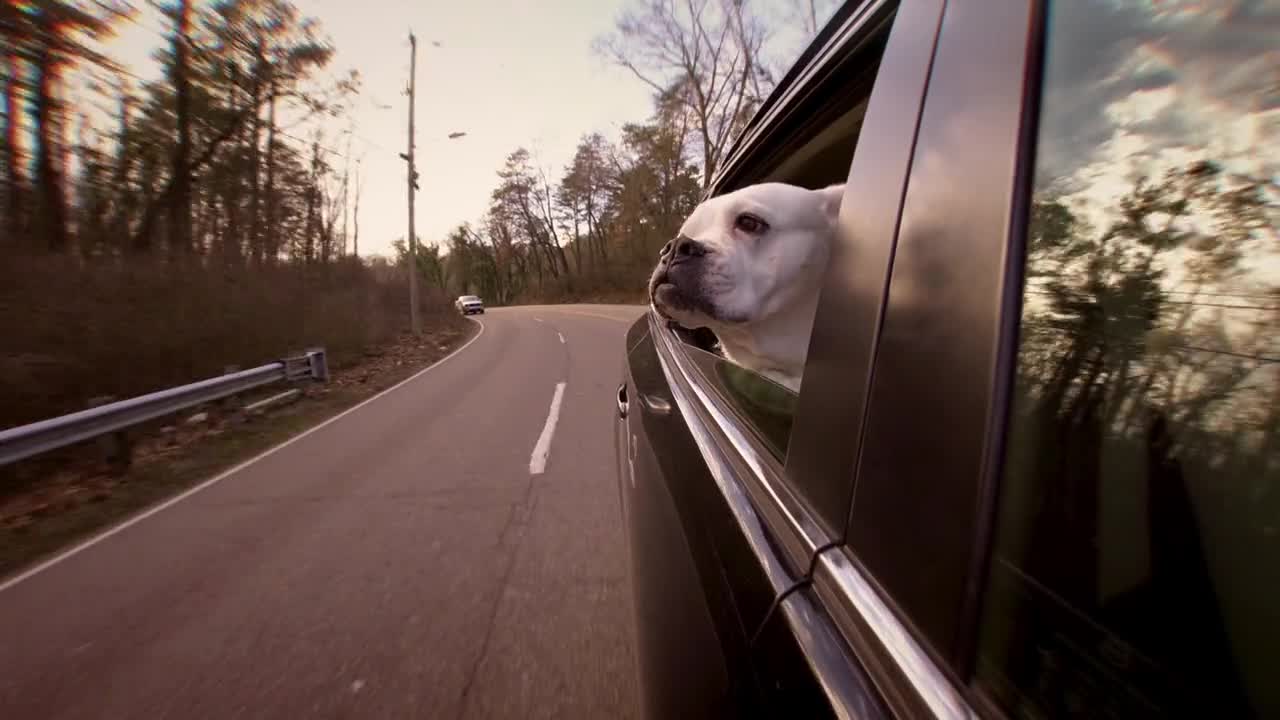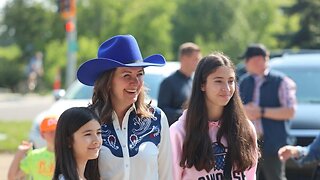Premium Only Content

Dog enjoying the view from the front seat of the car | Dog Video
Dog enjoying the view : The dog or domestic dog (Canis familiaris[4][5] or Canis lupus familiaris[5]) is a domesticated descendant of the wolf which is characterized by an upturning tail. The dog derived from an ancient, extinct wolf,[6][7] and the modern grey wolf is the dog's nearest living relative.[8] The dog was the first species to be domesticated,[9][8] by hunter–gatherers over 15,000 years ago,[7] before the development of agriculture.
List
C. aegyptius Linnaeus, 1758
C. alco C. E. H. Smith, 1839,
C. americanus Gmelin, 1792
C. anglicus Gmelin, 1792
C. antarcticus Gmelin, 1792
C. aprinus Gmelin, 1792
C. aquaticus Linnaeus, 1758
C. aquatilis Gmelin, 1792
C. avicularis Gmelin, 1792
C. borealis C. E. H. Smith, 1839
C. brevipilis Gmelin, 1792
C. cursorius Gmelin, 1792
C. domesticus Linnaeus, 1758
C. extrarius Gmelin, 1792
C. ferus C. E. H. Smith, 1839
C. fricator Gmelin, 1792
C. fricatrix Linnaeus, 1758
C. fuillus Gmelin, 1792
C. gallicus Gmelin, 1792
C. glaucus C. E. H. Smith, 1839
C. graius Linnaeus, 1758
C. grajus Gmelin, 1792
C. hagenbecki Krumbiegel, 1950
C. haitensis C. E. H. Smith, 1839
C. hibernicus Gmelin, 1792
C. hirsutus Gmelin, 1792
C. hybridus Gmelin, 1792
C. islandicus Gmelin, 1792
C. italicus Gmelin, 1792
C. laniarius Gmelin, 1792
C. leoninus Gmelin, 1792
C. leporarius C. E. H. Smith, 1839
C. lupus familiaris Linnaeus,1758
C. major Gmelin, 1792
C. mastinus Linnaeus, 1758
C. melitacus Gmelin, 1792
C. melitaeus Linnaeus, 1758
C. minor Gmelin, 1792
C. molossus Gmelin, 1792
C. mustelinus Linnaeus, 1758
C. obesus Gmelin, 1792
C. orientalis Gmelin, 1792
C. pacificus C. E. H. Smith, 1839
C. plancus Gmelin, 1792
C. pomeranus Gmelin, 1792
C. sagaces C. E. H. Smith, 1839
C. sanguinarius C. E. H. Smith, 1839
C. sagax Linnaeus, 1758
C. scoticus Gmelin, 1792
C. sibiricus Gmelin, 1792
C. suillus C. E. H. Smith, 1839
C. terraenovae C. E. H. Smith, 1839
C. terrarius C. E. H. Smith, 1839
C. turcicus Gmelin, 1792
C. urcani C. E. H. Smith, 1839
C. variegatus Gmelin, 1792
C. venaticus Gmelin, 1792
C. vertegus Gmelin, 1792
Due to their long association with humans, dogs have expanded to a large number of domestic individuals[10] and gained the ability to thrive on a starch-rich diet that would be inadequate for other canids.[11] Over the millennia, dogs became uniquely adapted to human behavior, and the human-canine bond has been a topic of frequent study.[12]
The dog has been selectively bred over millennia for various behaviors, sensory capabilities, and physical attributes.[13] Dog breeds vary widely in shape, size, and color. They perform many roles for humans, such as hunting, herding, pulling loads, protection, assisting police and the military, companionship, therapy, and aiding disabled people. This influence on human society has given them the sobriquet of "man's best friend."
-
 1:30:12
1:30:12
Jamie Kennedy
20 hours agoThe Truth About Anger, Race, & Feminine Energy w/ Jesse Lee Peterson | Ep 219 HTBITY
14.1K2 -
 1:45:39
1:45:39
The Quartering
6 hours agoMMA Fighter Tries To K*LL Wrestler, Hollywood PANIC & Sam Tripoli's Favorite Conspiracies
147K159 -
 1:05:04
1:05:04
Mark Kaye
5 hours ago🔴 Trump Sends Dems Into RAGE Over Flag Burning Executive Order
21.4K19 -
 LIVE
LIVE
Film Threat
19 hours agoVERSUS: AUGUST BOX OFFICE BLOOD BATH! MARVEL IS COOKED! | Film Threat Versus
94 watching -
![[Ep 734] Leftists Support of Black-on-Black Crime | Bolton Raid / Media Hypocrisy](https://1a-1791.com/video/fww1/0e/s8/1/a/F/p/c/aFpcz.0kob-small-Ep-734-Leftists-Support-of-.jpg) LIVE
LIVE
The Nunn Report - w/ Dan Nunn
2 hours ago[Ep 734] Leftists Support of Black-on-Black Crime | Bolton Raid / Media Hypocrisy
154 watching -
 29:39
29:39
Afshin Rattansi's Going Underground
1 day agoEx-Israeli PM Ehud Olmert: INTOLERABLE Amount of Innocent Palestinians Have Been Killed in Gaza
10K29 -
 7:49
7:49
Dr. Nick Zyrowski
6 months agoVitamin D is Dangerous? Get The TRUTH!
10.4K11 -
 1:03:48
1:03:48
daniellesmithab
4 hours agoExploring Nuclear Energy in Alberta
19.5K6 -
 LIVE
LIVE
Reidboyy
2 hours ago $0.34 earnedNEW FREE FPS OUT ON CONSOLE NOW! (Delta Force = BF6 with Killstreaks)
38 watching -
 2:30:04
2:30:04
Nerdrotic
6 hours ago $2.24 earnedNerdrotic Nooner 509
33.1K1